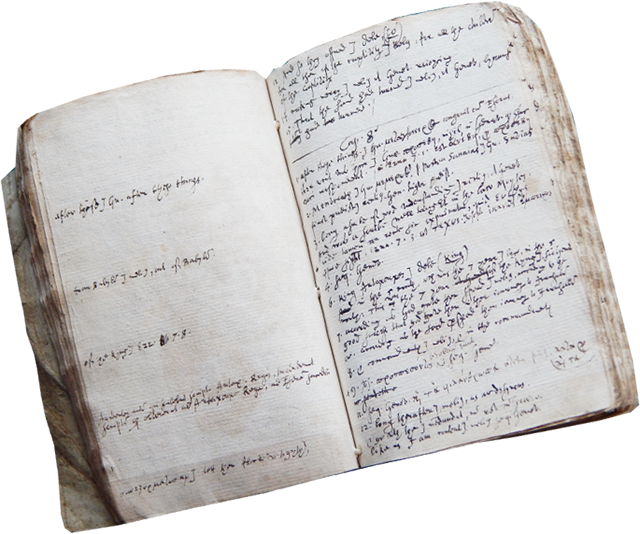Professor Makes Historic Bible Discovery
English Professor Jeffrey Alan Miller made global headlines last summer when he discovered the earliest known draft of the King James Bible – the most widely read work of English literature in history.
While researching in England for an essay about King James Bible translator Samuel Ward in the archives of Cambridge University’s Sidney Sussex College, Miller made the remarkable discovery.
He found the draft, dating from sometime between 1604 and 1608, in one of Ward’s notebooks in the college’s archives. While at first glance the part of the notebook in question appeared to be a “verse-by-verse biblical commentary,” as cataloged, Miller realized questions remained and took pictures of the manuscript to study on his return to the U.S.

“Around a month later, while going over the images of the manuscript in more detail, I realized that it wasn’t a biblical commentary but was in fact a draft of the King James Bible,” says Miller.
Ward’s draft is the only draft of the King James Bible ever found in handwriting that can be definitively identified as belonging to one of the King James Bible translators. Miller’s announcement of his discovery in London’s Times Literary Supplement (TLS) in October 2015 made headlines around the world, including stories in The New York Times, The Guardian and Salon.com.

While the draft reveals many of the complexities of individual and group translations involved in composing the King James Bible, it also sheds new light on the role that Hebrew, Greek and Latin played in shaping the Bible’s masterful English translation.
As Miller suggested in the TLS, the draft shows that the iconic King James Bible may be more of a “patchwork” of individual and team translations than previously acknowledged. “It provides a unique window into what work on the translation entailed from the very beginning,” says Miller, who finds it especially valuable for what it helps to reveal about one of the 17th century’s most extraordinary cultural achievements.
Miller’s discovery has opened the door to numerous scholarly questions. “The process of exploring these questions remains ongoing and, happily, it will probably never end,” he says.